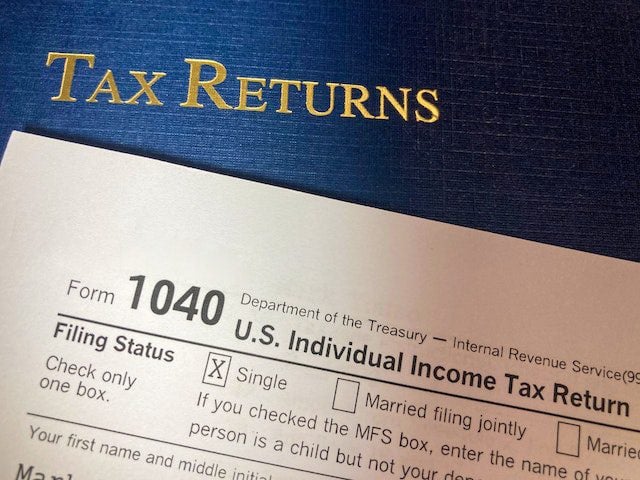Tax Preparation Checklist
Let’s face it: nobody really enjoys filing their taxes. But it’s something we all need to do, so why not make it a little easier for yourself?
Instead of putting off your tax preparation until the last minute, you should start early and get it over with. That way, you’ll reduce those stress levels and have plenty of time to focus on other important things.
So how do you start? By getting organized with a tax preparation checklist. This simple step will take the hassle out of collecting the information and documents you need to compile your tax return.
In this article, we’ll discuss why and how to use a checklist when preparing your taxes. We’ll also discuss the information and documents you need to keep a record of for this purpose.
Why Should I Use a Tax Preparation Checklist?
Checklists are a great way of freeing up some mental space and helping you get things done correctly and on time. Below are a few advantages that a checklist brings to the table:
Reduces decision fatigue (yes, that’s a real thing)
When you need to remember too many things, your brain could get exhausted and decision fatigue may set in. By using a checklist, you can avoid this and stay on top of your game when filing your taxes.
Reduces the potential for mistakes
If you fully rely on your memory to get things done, you could end up missing some important information or making mistakes along the way. However, if you follow a checklist, you can ensure that you put enough thought into each and every step. This will eliminate potential errors in your tax returns.
Keeps you organized
We all know how frustrating cluttered paperwork can be. A checklist will help you streamline the clutter by planning your tax preparation process step-by-step.
If you make any mistakes on your tax returns, you’ll need to complete more paperwork to get it fixed. The IRS can also decide to audit you, which can be very stressful. A checklist will help you minimize mistakes during your tax preparation process and allow you to easily file your tax returns on time.
How Do I Use a Tax Preparation Checklist?
The great thing about this checklist is that, assuming your tax situation doesn’t change dramatically in the future, you only need to create it once. From there, you can make copies to use each time you need to file a tax return. All you need to do is place a copy of the checklist inside a file folder that you’ll be able to locate on command. As you collect information and documents related to your tax return, add them to the folder and check them off the list. It’s as easy as that!
How to Create the Best Tax Preparation Checklist
Because everyone’s tax requirements are different, you should create a personalized checklist that’s tailored to your needs. Conduct a thorough assessment of your finances to determine which documents and information you’ll need to prepare your tax return.
Below is a list of examples to get you started. You can use this as a base for your checklist, and add or remove items according to their relevance to your situation:
Personal Information
This section contains information regarding the person who’s filing the return, as well as those covered in the return (such as your spouse and dependents). For this category, you’ll need the following information:
- Full name and surname for all taxpayers
- Taxpayers date of birth
- Birth dates for your dependents
- Your Social Security Number
- Social Security Numbers of your spouse and dependents
- Your bank account information (in case the IRS needs to refund you)
Income and Investment Information
This section includes all the information related to your entire income — including that of your spouse. The forms you need to complete will depend on the types of income you received. Below is a list of examples:
- If you’ve been granted a student loan, you’ll need to complete a Form 1098-E.
- If you’ve taken out a mortgage on your home, you’ll need to fill out a Form 1098.
- If you’re employed, you’ll need to file your Form W-2.
- If you’ve done any independent contractor work, you’ll need to complete a Form 1099-MISC.
- If you’ve received any dividends, you’ll need to include a Form 1099-DIV.
- If you’ve received any funds from the government, you’ll need to fill out a Form 1099-G.
- If you’ve benefited from any real estate transactions, you’ll need to file a Form 1099-S.
Income Adjustments
Income adjustments, also known as line deductions, reduce your total amount of income. This can reduce the taxes you need to pay, or even result in a tax refund. You’ll need to gather information on all these adjustments and include them in your tax preparation file. Below are a few examples of income adjustments that you can add to your tax return:
- IRA contributions (for this, you’ll need to complete a Form 5498).
- Student loan interest
- Health Savings Accounts contributions (for this, you’ll need to include a Form 8889).
- Educator expenses
- Moving expenses
Tax Deductions
The IRS offers various deductions and credits that can lower your tax burden. If you’re entitled to any of these deductions, you’ll need to substantiate your claim with the necessary documentation. Below are a few examples:
- Donations to charity: You’ll need to provide the value of cash or property donations.
- Adoption costs: You’ll need to provide the Social Security Number of the adopted child, as well as the value of any legal, medical, or transportation costs related to the adoption.
- Childcare expenses: Other than declaring the expenses, you’ll also need to provide your childcare provider’s name, address, and Tax ID.
- Home office deductions: If you work from home, you’ll need to report certain information such as the square footage of your office.
- Travel deductions: If you’ve made any work-related trips, you’ll need to provide accurate mileage records.
Tax Payment History
By properly documenting the taxes you’ve already paid throughout the year, you can decrease the amount you owe. Below is a list of tax payments you should definitely keep a record of:
- Real estate taxes
- Personal property taxes
- Estimated tax payments (if you’re self-employed)
In addition to these, you should keep copies of your federal and state tax returns that were filed in the last three years. These will come in handy during your tax filing process.
Conclusion
Even if you’re employing the help of a tax professional to file your returns, you will still reap the benefits of using a tax preparation checklist. It will help you gather all the necessary information to assure accurate and timely tax filing.
And if you are dealing with the burden of unfiled tax returns or debt that you owe to the IRS, the best thing you can do is reach out to qualified tax relief professionals at The Tax Defenders. We know the IRS and tax resolution options backwards and forwards. We can assess your finances and diligently seek solutions on your behalf.







